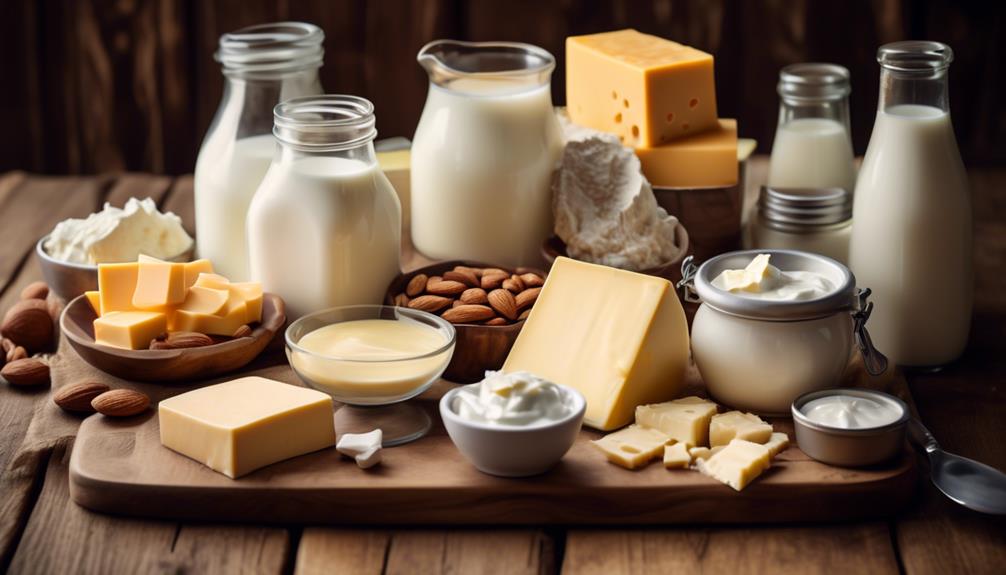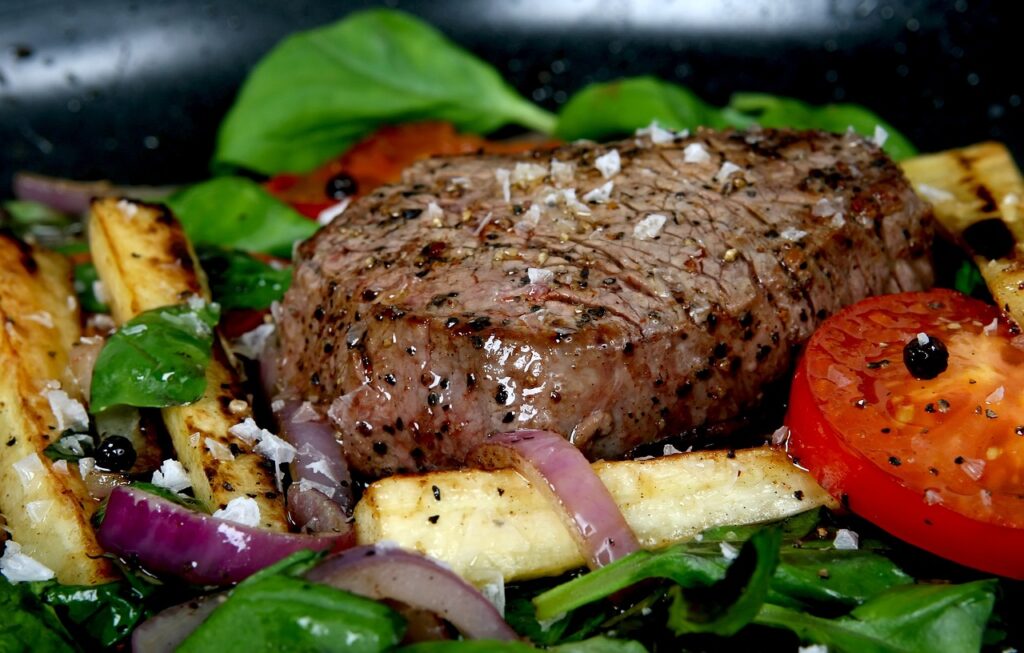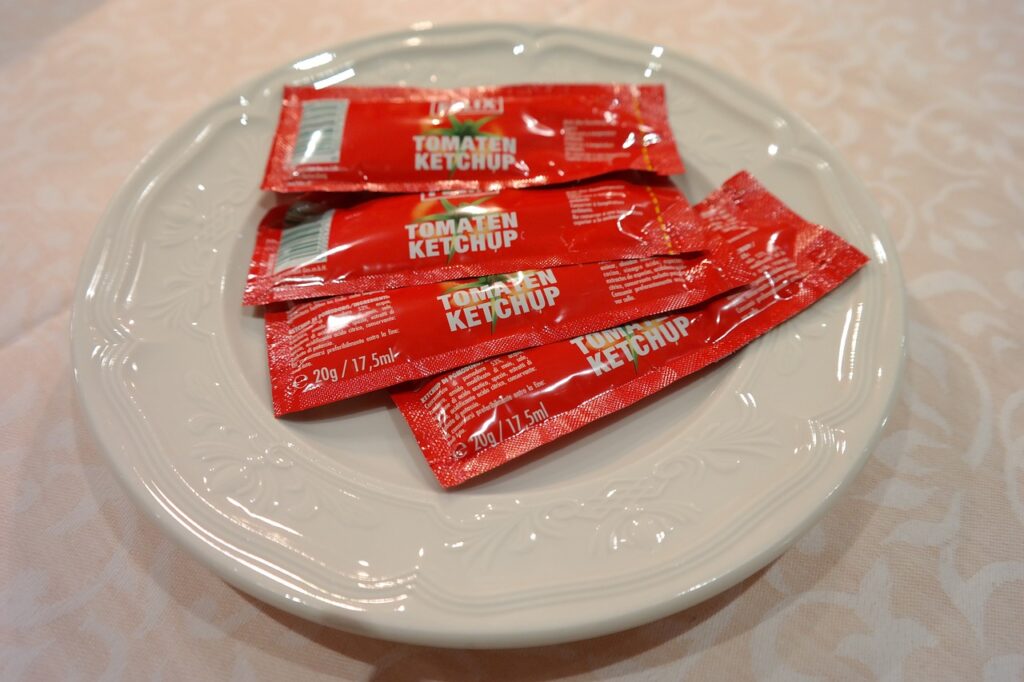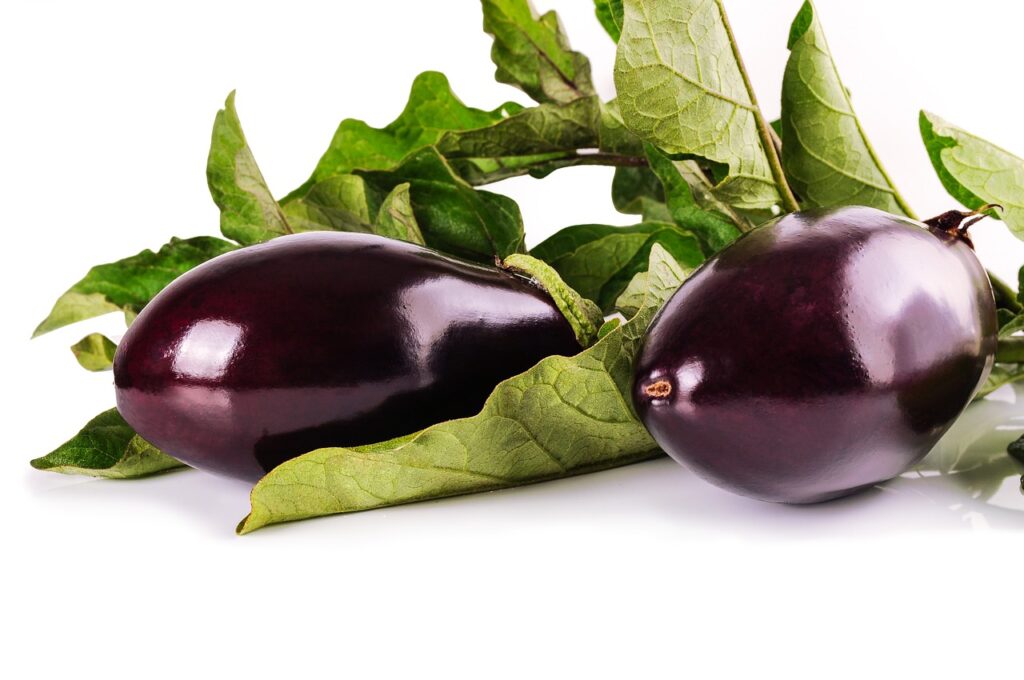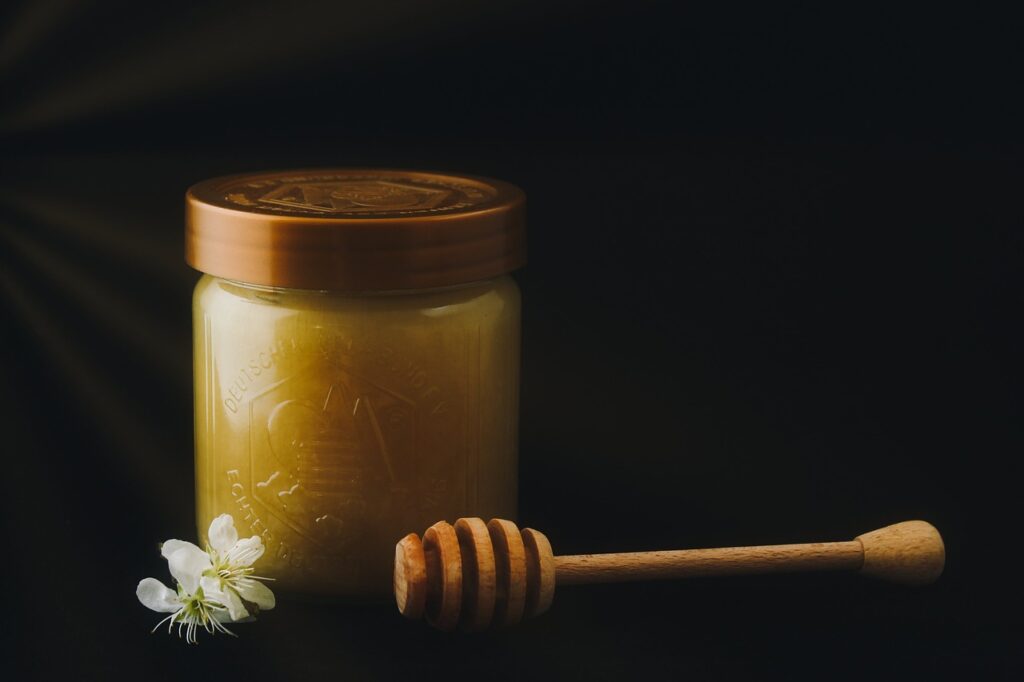Have you ever wondered how to incorporate dairy products into your keto diet? Look no further than this easy keto dairy products guide.
With a plethora of options to choose from, it's important to understand which dairy products are keto-friendly and how to use them effectively in your meals.
From butter to cheese, yogurt to ice cream, and even milk alternatives, this guide will provide you with the knowledge and tips you need to enjoy delicious and satisfying dairy products while staying in ketosis.
So, get ready to discover a world of tasty possibilities that will keep you on track with your keto lifestyle.
Choosing the Right Dairy Products
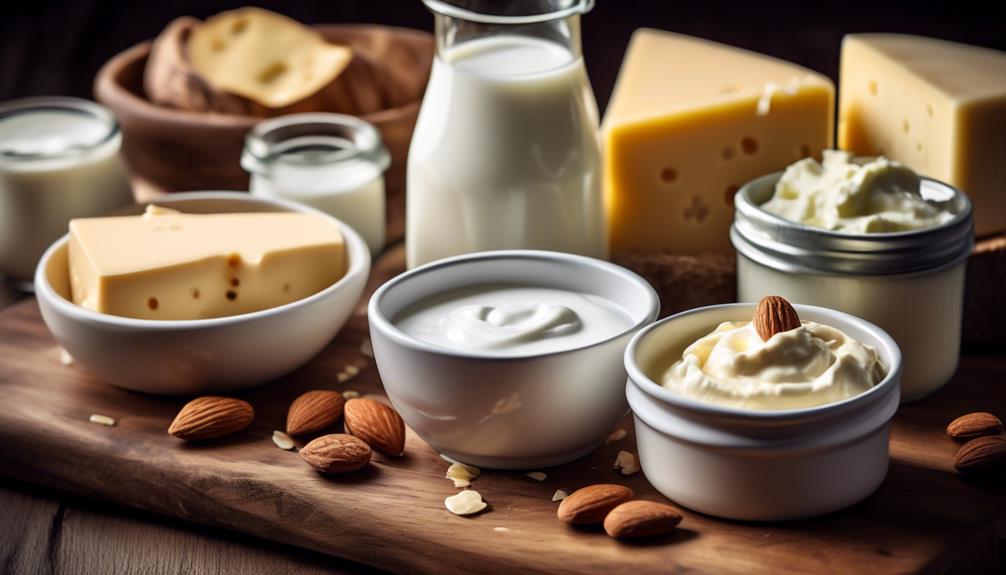
To make the most out of your keto diet, it's important to choose the right dairy products that are low in carbs and high in fat. When it comes to milk options on a keto diet, it's best to opt for low-carb alternatives. Regular cow's milk is relatively high in carbs due to its lactose content, which can hinder your progress on the keto diet. However, there are several keto-friendly milk options available that can still satisfy your dairy cravings.
One popular choice is almond milk, which is low in carbs and high in healthy fats. Unsweetened almond milk contains only 1-2 grams of carbs per cup, making it a great choice for those following a keto diet. Another option is coconut milk, which is also low in carbs and high in healthy fats. It provides a creamy texture and a delicious flavor to your dishes.
In addition to milk alternatives, consuming full-fat dairy products can be beneficial on a keto diet. Full-fat dairy products like cheese, butter, and cream are low in carbs and high in fat, making them an excellent choice for those on a keto diet. They provide essential nutrients, such as calcium and vitamin D, while keeping you satiated and helping you meet your fat intake goals.
When choosing dairy products for your keto diet, always read the labels and opt for products that are low in carbs and high in fat. This will ensure that you stay in ketosis and make the most out of your keto journey.
Understanding Keto-Friendly Dairy Options
When it comes to incorporating dairy into your keto diet, understanding which options are keto-friendly is essential for maintaining ketosis and achieving your goals. Choosing the right dairy products can help you stay on track with your carbohydrate intake while still enjoying the benefits of dairy.
When it comes to milk, opt for unsweetened almond milk or coconut milk, as they're low in carbs and high in healthy fats. These alternatives are great options for those following a keto diet. Additionally, they're naturally lactose-free, making them suitable for individuals with lactose intolerance.
Another keto-friendly option is ghee, which is clarified butter. Ghee has a rich, nutty flavor and is a great source of healthy fats. It contains no carbohydrates or lactose, making it a perfect addition to your keto diet. Ghee also has a high smoke point, making it suitable for cooking at high temperatures.
Incorporating keto-friendly dairy options into your diet can provide various benefits. They're a great source of healthy fats, which are essential for maintaining ketosis. Additionally, they can help add flavor and richness to your meals without adding unnecessary carbohydrates. Remember to read labels and choose products that are low in carbohydrates and free from added sugars to ensure they fit within your keto diet.
Incorporating Butter Into Your Keto Diet
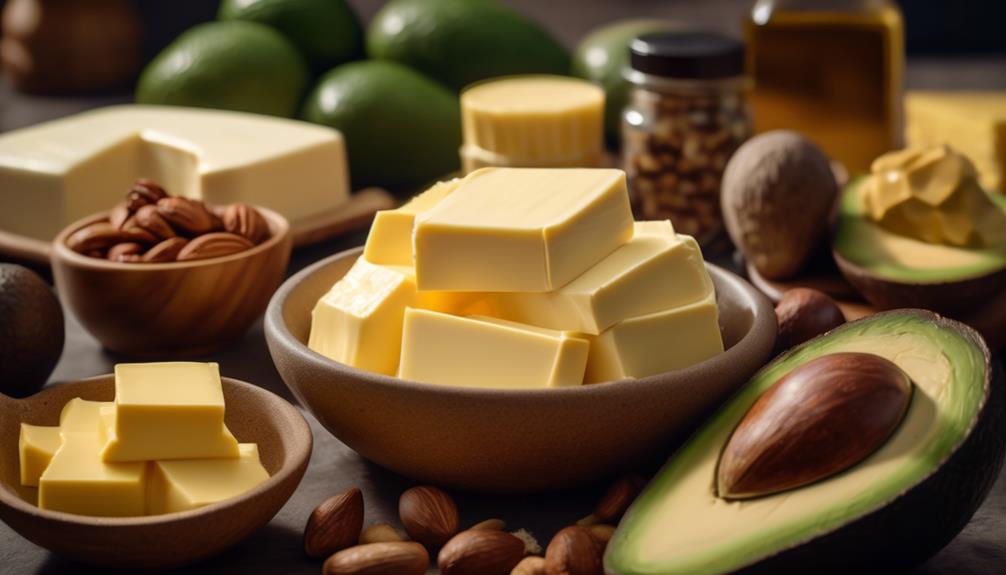
If you're following a keto diet, incorporating butter can be a great way to add flavor and healthy fats to your meals. Butter is rich in nutrients like vitamins A, E, and K, and it also contains conjugated linoleic acid (CLA), which has been linked to various health benefits.
If you're looking for alternatives to butter, you can try ghee or coconut oil, which are both keto-friendly and offer similar benefits.
When cooking with butter, make sure to use it in moderation, as it's high in calories.
Health Benefits of Butter
Incorporate butter into your keto diet to enjoy its numerous health benefits. Grass-fed butter, in particular, offers a range of advantages due to its unique nutritional profile:
- Rich in healthy fats: Butter is a great source of healthy fats, including omega-3 and omega-6 fatty acids, which have been linked to improved heart health and reduced inflammation.
- Packed with vitamins: Butter contains fat-soluble vitamins like vitamin A, D, E, and K, which are essential for various bodily functions, such as immune support and bone health.
- Provides CLA: Grass-fed butter is a particularly good source of conjugated linoleic acid (CLA), a fatty acid that has been associated with reduced body fat and improved metabolic health.
Butter Substitutes for Keto
To continue reaping the health benefits of butter on your keto diet, explore some delicious alternatives that can be incorporated seamlessly into your meal plan.
When it comes to keto-friendly spreads, there are a few options to consider. One popular choice is ghee, which is clarified butter that has had the milk solids removed. Ghee is rich in healthy fats and has a high smoke point, making it ideal for cooking and baking.
Another option is coconut oil, which isn't only dairy-free but also packed with medium-chain triglycerides (MCTs), known to boost ketone production.
Avocado oil is another great choice, as it contains monounsaturated fats that are heart-healthy and can help support ketosis.
Cooking With Butter
Butter is a versatile and delicious ingredient that can be easily incorporated into your keto diet to add flavor and healthy fats to your meals. When it comes to cooking with butter on a keto diet, there are a few techniques and considerations to keep in mind. Here are some tips to help you make the most of this delightful dairy product:
- Use butter as a cooking fat: Butter can be used as a flavorful cooking fat for sautéing vegetables, frying eggs, or searing meats.
- Clarify your butter: Clarified butter, also known as ghee, is butter that has had the milk solids removed. It has a higher smoke point, making it ideal for high-heat cooking methods like frying or roasting.
- Be mindful of portion sizes: While butter is a great source of healthy fats, it's still high in calories. Be mindful of portion sizes to ensure you stay within your daily caloric limits.
Incorporating butter into your keto diet not only adds richness and flavor to your meals but also provides valuable nutritional value in the form of healthy fats. Explore different cooking techniques and enjoy the benefits of this versatile dairy product.
Exploring Different Types of Cheese for Keto

When following a keto diet, cheese can be a delicious and versatile option to incorporate into your meals. There are various popular cheese varieties that are low in carbohydrates and high in fat, making them suitable for a keto lifestyle.
Not only does cheese provide a satisfying and creamy texture to your dishes, but it also offers several health benefits, such as being a good source of protein, calcium, and other essential nutrients.
Popular Keto Cheese Varieties
When adopting a keto diet, exploring different types of cheese can be a practical and delicious way to add variety to your meals while staying within your low-carb guidelines. Here are some popular keto cheese varieties to consider:
- Cheddar: With its sharp flavor and creamy texture, cheddar cheese is a versatile option for keto recipes. It can be used in omelettes, casseroles, and even as a low-carb cheese snack.
- Mozzarella: This mild and stretchy cheese is a staple in many keto-friendly recipes. It can be melted on top of pizzas, stuffed into chicken breasts, or used in a variety of keto-friendly cheese snack ideas like mozzarella sticks.
- Parmesan: Known for its rich and nutty flavor, Parmesan cheese is a great choice for adding a burst of taste to your dishes. It can be grated over salads, sprinkled on roasted vegetables, or enjoyed as a crunchy keto-friendly cheese snack.
These popular keto cheese varieties offer a wide range of flavors and textures, making them perfect for enhancing your keto meals and snacks.
Health Benefits of Cheese
Cheese offers a multitude of health benefits, making it an excellent addition to a keto diet. Contrary to popular belief, cheese, when consumed in moderation, can have a positive impact on your overall health.
Firstly, cheese is a rich source of protein, which is essential for muscle growth, repair, and maintenance. Additionally, it contains important nutrients like calcium and vitamin B12, which are crucial for bone health and nervous system function.
Furthermore, cheese has been found to have a minimal impact on cholesterol levels. While it's true that cheese contains saturated fats, studies have shown that the impact of saturated fats on cholesterol levels isn't as significant as previously believed.
However, it's important to note that excessive cheese consumption can still pose health risks, such as weight gain and increased risk of heart disease. Therefore, it's crucial to enjoy cheese in moderation as part of a balanced keto diet.
Enjoying Keto-Friendly Yogurt Varieties
To fully embrace the keto lifestyle, incorporating a variety of yogurt options that are low in carbs and high in fat can be a delicious and nutritious choice. Whether you prefer store-bought or homemade, there are plenty of keto-friendly yogurt options available to satisfy your cravings.
Here are some ideas to get you started:
- Keto-friendly yogurt brands: Look for brands that offer yogurt made from full-fat dairy products and have minimal added sugars. Some popular options include Fage Total 5% Greek Yogurt, Two Good Greek Yogurt, and Siggi's Triple Cream Yogurt.
- Homemade keto yogurt recipes: If you prefer a DIY approach, making your own keto-friendly yogurt is easier than you might think. There are several recipes available online that use ingredients like full-fat coconut milk or heavy cream as a base. You can customize the flavor by adding low-carb sweeteners or extracts like vanilla or almond.
When choosing a yogurt, be sure to check the nutrition label and opt for options that have low net carbs and high fat content. Remember, the keto diet emphasizes consuming moderate protein, high fat, and low carbs.
Making Keto Cream the Perfect Addition to Your Recipes

For a rich and creamy addition to your keto recipes, look no further than making keto cream. This versatile ingredient can be used in a variety of ways, from making keto-friendly whipped cream to adding a creamy touch to your morning coffee.
To make keto whipped cream, start by chilling a can of full-fat coconut milk in the refrigerator overnight. When you're ready to make the whipped cream, open the can and scoop out the solid cream that has risen to the top. Leave the liquid behind (you can save it for smoothies or other recipes). Using an electric mixer, whip the cream until it reaches your desired consistency. You can sweeten it with a keto-friendly sweetener like stevia or erythritol if desired.
Keto cream can also be a delicious addition to your coffee. Simply add a splash of keto cream to your cup of joe for a creamy and indulgent treat. You can also experiment with adding flavors like vanilla extract or cinnamon for an extra kick.
Whether you're making keto-friendly whipped cream or adding it to your coffee, keto cream is a versatile ingredient that can add a rich and creamy touch to your favorite recipes. So go ahead, whip up a batch and enjoy!
Creating Delicious Keto-Friendly Ice Cream at Home
Create delicious keto-friendly ice cream at home with these simple recipes and techniques. Making homemade keto-friendly ice cream is a great way to satisfy your sweet tooth while sticking to your low-carb diet. Here are some tips and recipes to help you create creamy and flavorful keto-friendly ice cream:
- Use keto-friendly milkshakes as a base: Swap regular milk with unsweetened almond milk or coconut milk to reduce the carb content. These milk alternatives are low in carbs and high in healthy fats, making them perfect for a keto-friendly ice cream base.
- Experiment with different flavors: Add natural flavors like vanilla extract, cocoa powder, or fruit extracts to enhance the taste of your ice cream. You can also incorporate sugar-free sweeteners like stevia or erythritol to add sweetness without the extra carbs.
- Try keto-friendly frozen yogurt: If you prefer a tangy and refreshing treat, make keto-friendly frozen yogurt. Use full-fat Greek yogurt, which is low in carbs and high in protein, as the base. Add your favorite keto-friendly fruits or sugar-free syrups to create a delicious frozen yogurt flavor.
Trying Keto-Approved Milk Alternatives
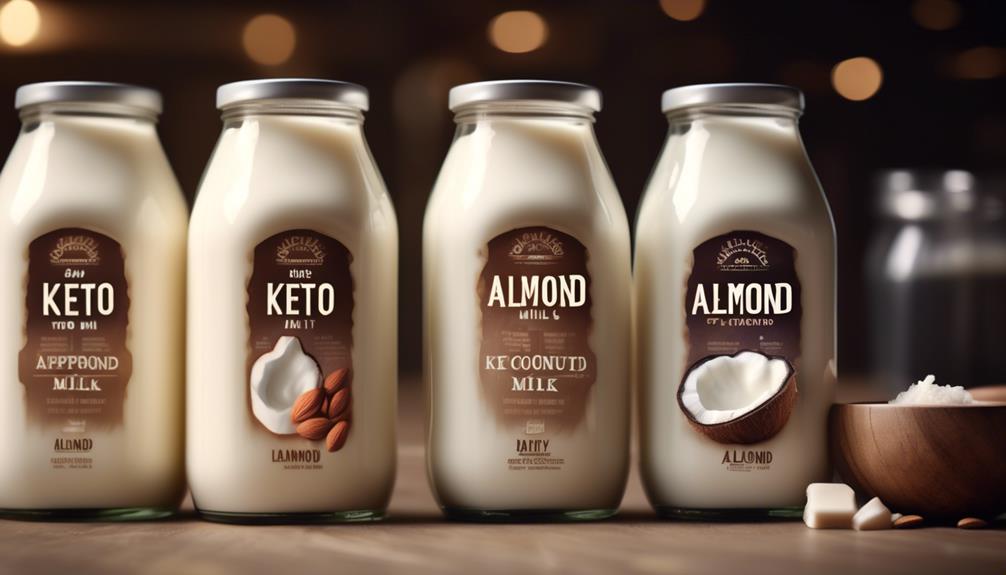
One way to explore dairy alternatives on the keto diet is by trying out keto-approved milk alternatives. While traditional cow's milk isn't suitable for a keto diet due to its high carbohydrate content, there are several keto-friendly milk options available that can be incorporated into your daily routine.
One popular option is unsweetened almond milk, which is low in carbs and calories. It's made from almonds and water, providing a creamy texture without the excess carbohydrates. Another alternative is coconut milk, which is rich in healthy fats and can add a tropical flavor to your dishes.
If you prefer a creamier texture, you can try using heavy cream or full-fat coconut milk. These options are higher in fat and lower in carbohydrates compared to regular milk, making them ideal for the keto diet.
In addition to these milk alternatives, there are also non-dairy creamers specifically designed for the keto diet. These products typically contain ingredients like coconut milk powder, MCT oil, and stevia for added sweetness. They can be a convenient option to enhance the flavor of your coffee or tea while staying within your keto macros.
When choosing keto-approved milk alternatives or non-dairy creamers, it's important to check the nutrition labels and select products that are low in carbohydrates and free from added sugars. Incorporating these options into your keto meal plan can help you enjoy creamy and delicious beverages while staying on track with your dietary goals.
Baking With Keto Dairy Substitutes
To continue your exploration of keto-friendly dairy alternatives, let's now focus on the topic of baking with these substitutes. Baking on a keto diet may seem challenging, but with the right tips and ingredients, you can still enjoy delicious treats without compromising your goals.
Here are some baking tips to help you navigate the world of keto dairy substitutes:
- Choose the right fats: When substituting dairy products like butter or cream, opt for keto-friendly alternatives like coconut oil, ghee, or avocado oil. These fats provide moisture and help achieve a desirable texture in your baked goods.
- Experiment with nut flours: Replace traditional wheat flour with almond flour, coconut flour, or a combination of both. These low-carb alternatives are packed with nutrients and provide a great texture to your baked goods.
- Use keto-friendly sweeteners: Traditional sugar is a no-go on a keto diet, but you can still satisfy your sweet tooth with alternatives like stevia, erythritol, or monk fruit sweetener. These sweeteners have minimal impact on blood sugar levels and can be used in a 1:1 ratio as a sugar substitute in most recipes.
Tips for Storing and Freezing Keto Dairy Products
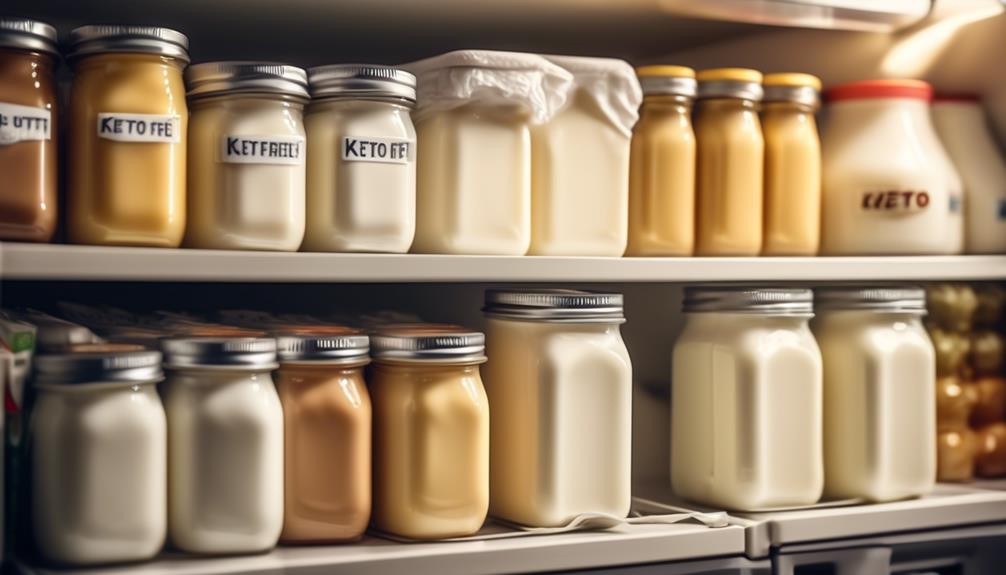
When it comes to storing and freezing keto dairy products, there are a few tips that can help maintain their freshness and quality.
Let's start with storing keto-friendly ice cream. It's important to keep it in an airtight container to prevent freezer burn. Freezer burn can lead to a change in texture and taste. Make sure to label the container with the flavor and date of freezing so you can easily identify it later.
When freezing keto cream, you can use ice cube trays for convenient portion sizes. Once the cream is frozen, transfer the cubes into a freezer-safe bag or container. This way, you can easily grab the amount you need without thawing the entire container.
To maintain the quality of your stored keto dairy products, it's essential to keep the freezer temperature constant. Fluctuating temperatures can affect the texture and taste. It's recommended to set your freezer temperature at 0°F (-18°C) or lower.
Remember to consume your stored keto dairy products within a reasonable time frame. While freezing can extend their shelf life, it's best to use them within 2-3 months for optimal taste and quality.
Conclusion
In conclusion, with these easy keto dairy products, you can enjoy a wide range of delicious options while staying true to your ketogenic lifestyle. By choosing the right dairy products and incorporating them into your meals, you can still indulge in butter, cheese, yogurt, and even homemade ice cream.
Don't forget to explore milk alternatives and baking with keto dairy substitutes. With these practical tips for storing and freezing, you'll have a well-stocked keto-friendly pantry.
Embrace the euphoria of guilt-free dairy delights on your keto journey.

